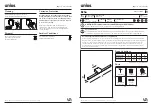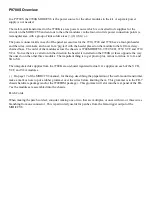
Refrigerated Centrifuge for Robot Use Sigma 4-5KRL
Refrigerated Centrifuge for Robot Use Sigma 4-5KRL IVD
2 Layout and mode of operation
16 / 113
Version 11/2017, Rev. 1.7.1 of 08/12/2022
• sb
Translation of the original operating manual,
→
2.2.2.1
Speed, radius, and relative centrifugal force
The acceleration g, which the samples are subject to, can be increased by
increasing the radius in the rotor chamber and by increasing the speed.
These three parameters are interdependent and linked with each other via
the following formula:
Relative centrifugal force RCF = 11.18 x 10
-6
x r x n
2
r = radius in cm
n = speed in rpm
RCF without any dimension
If two values are entered, the third value is determined by way of the stated
formula. If, afterwards, the speed or the radius is changed, the resulting
relative centrifugal force will be recalculated automatically by the control
unit. If the RCF is changed, the speed will be adapted while the specified
radius is maintained.
The speed-gravitational-field-diagram provides an overview of the
relationship between speed, radius, and RCF (see chapter 11.2 - "Speed-
gravitational-field-diagram").
→
2.2.2.2
Density
The laboratory centrifuge is suitable for the separation of constituents of
different densities in mixtures with a maximum density of 1.2 g/cm
3
. All
information concerning the speed of rotors and accessories refers to liquids
with a density corresponding to this specification. If the density is above this
value, the maximum permissible speed of the centrifuge must be reduced
based on the following formula:
n = n
max
x
√(1.2/𝜌)
𝜌
= density in g/cm
3
















































